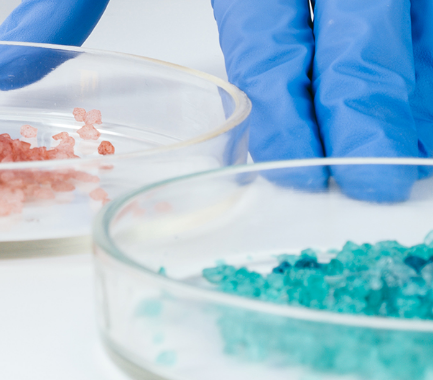Your contact
PENPET-Team - Hamburg

Christoph Meister
Sales
Tel. +49 (0) 40 - 675 7 99 30
sales@penpet.de
Get in touch with us.
n-Butyraldehyde
n-Butyraldehyde is an organic compound that belongs to the aldehydes and is an important raw material for processes in the chemical industry. The substance is produced by the hydroformulation of propene gas using catalysts. The compound occurs naturally in the coffee plant, among others.
n-Butyraldehyde is used as a starting material for numerous syntheses. Synthetic resins, vulcanization accelerators, tanning agents, fragrances and plasticizers are manufactured on the basis of the substance. For example, the production of diethylhexyl phthalate (DEHP), one of the most important plasticizers for products made from polyvinyl chloride (PVC), is based on the use of n-butyraldehyde. The alcoholic n-butanol is obtained by industrial-scale processes of hydrogenating the compound. Butanoic acid can also be produced from n-butyraldehyde by oxidation.'
At PENPET you get n-butyraldehyde of the highest quality, from a reliable partner who will also meet your requirements in the long term. We look forward to receiving your inquiry for an individual offer. Prompt delivery of the liquid can be made in packages with different weights.
CAS no. 123-72-8
EINECS no. 204-646-6
Molecular formula: C4H8O
Synonyms: Butyraldehyde, Butanal, n-Butanal, Butyrylhydruer, Butolyde, Propylhydrocarbonoxid, Butyric aldehyde, Butyraldehyde
Areas of application: Raw material for chemical syntheses, starting material for the production of softeners, fragrances, tanning agents, synthetic resins and vulcanization accelerators
More Information
n-Butyraldehyde is the aldehyde of linear n-butane. It consists of a regular, four-membered hydrocarbon chain, the terminal carbon atom of which is the center of an aldehyde group and, in addition to a hydrogen atom, has a double bond to an oxygen atom. This functional group determines the reactive profile of the substance.
The corresponding carboxylic acid, butanoic acid, can be produced from the aldehyde by oxidation. In the course of hydrogenation, conversion to the corresponding alcohol, n-butanol, is possible. As an aldehyde, the compound can react with other aldehydes under water splitting or in a reaction of several molecules with each other to form more complex, unsaturated aldehydes or ketones.
Under normal conditions, n-butyraldehyde is a liquid, highly volatile substance. The colorless compound has an unpleasant, pungent odor and is highly flammable. The substance boils at 75 °C. It reaches its melting point at temperatures below -97 °C.
n-Butyraldehyde is only moderately soluble in water. However, the substance is readily soluble in many organic solvents such as diethyl ether, hexane, acetone, toluene, benzene and ethanol. n-Butyraldehyde forms azeotropic mixtures with a number of compounds such as water, ethanol and hexane at certain mixing ratios. With these, the solution has a common boiling point, so that the starting materials can no longer be separated from one another by simple distillation.
n-Butyraldehyde is flammable. The vapors of the volatile compound pose a particular hazard. These form highly flammable air-vapor mixtures with the ambient air, which pose a high risk of explosion. Due to their higher density, these can collect and spread unnoticed on the ground. When handling open containers of n-butyraldehyde, it is therefore essential to ensure adequate ventilation and sufficient distance from potential sources of ignition such as hot surfaces, electrical discharges, sparks or open flames. Remote detonations are possible.
n-Butyraldehyde tends to polymerize when heated and when it comes into contact with alkaline compounds and acids. As the temperature increases, self-ignition of the compound is possible. The substance reacts, sometimes violently, with strong acids and oxidizing agents as well as amines and strong bases. When n-butyraldehyde is burned, acrid, harmful and sometimes toxic gases such as carbon monoxide are produced.
n-Butyraldehyde is an irritant. The main risk of exposure comes from the vapors of the volatile compound. The substance usually causes only slight irritation on the skin. In addition to redness, burning pain and a strong tear stimulus can also occur in the eye. Prolonged contact with the liquid can also cause corneal damage. Affected body areas should be rinsed immediately and thoroughly with water. After exposure to the eye, ophthalmological treatment must also be arranged.
Inhalation of n-butyric aldehyde vapors may cause irritation of the respiratory tract, pain in the nose and throat, coughing, difficulty breathing, headache and severe nausea. High exposure can cause pulmonary edema and pneumonia. Ingestion of the compound causes painful irritation of the mouth, esophagus and stomach. This can lead to gastrointestinal symptoms such as nausea and vomiting. Mucosal damage is possible. If significant amounts are absorbed into the metabolism, disorders of the central nervous system such as drowsiness and apathy, shortness of breath, metabolic disorders and organ damage are to be expected.
